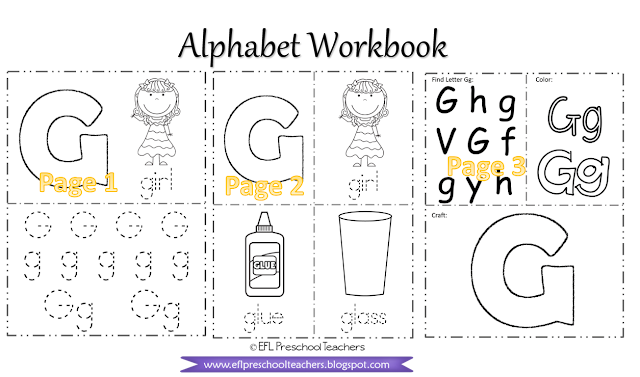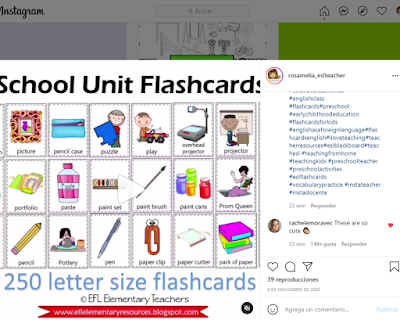I updated the resource, I changed the clip art
and the font of the workbook.
There aren´t many
alphabet workbooks designed with the EFL learner in mind. In such a need for
the school that I coordinate EFL Preschool, I created this multiuse resource.
Get the file here:
https://www.teacherspayteachers.com/Product/Alphabet-Workbook-for-Elementary-ELL-2349980
The resource is also available here: https://www.bilingualmarketplace.com/products/alphabet-workbook-for-elementary-ell?variant=37318631293092
The selection of the correct resource will benefit your students. Use it as a workbook, print all the pages and then bind or just use it as worksheets whenever you need more material for a specific letter.
Printable Alphabet Workbook. The school turned the resource into a
workbook. Students can learn the name and the sound of each letter. I listed three
common words that begins with each letter. There are three pages per letter. 
Page 1 is to introduce the letter. Reinforce the Capital letter and small
letter.
Teacher: Point to letter G.
Teacher: Color Letter G red.
Teacher: point to the girl.
Teacher: Color the girl.
Teacher: trace letter Gg blue and repeat the letter.
Page 2 is to color and trace the words with the letter. Then,
students can cut all the items into flashcards to play games in class or to
create minibooks and more as you will see below. Teacher: Point to letter G. Color Letter G yellow. Continue dictating the color of the other items.
Page 3 is to wrap up the letter study and create a create something with the letter, that why I put the word CRAFT. For this letter, the students turned the letter G into a glue bottle.Students can also cut that part of the page and use on their notebook for anything you want to do more activities. Teacher: Find letter G. Color Letter G green. Continue dictating the color of the capital G and the small g.
Here is the complete workbook.Check the VIDEO:
Make books. There are so many ways to create books to take home to practice the alphabet. Here are some examples of all the
book you can make. The idea is to expand into other activites the pictures and words from the workbook.

I added awards, labels for the flashcards and for the books.



















































